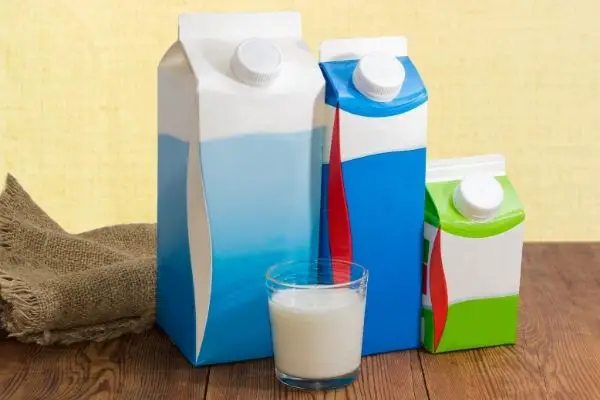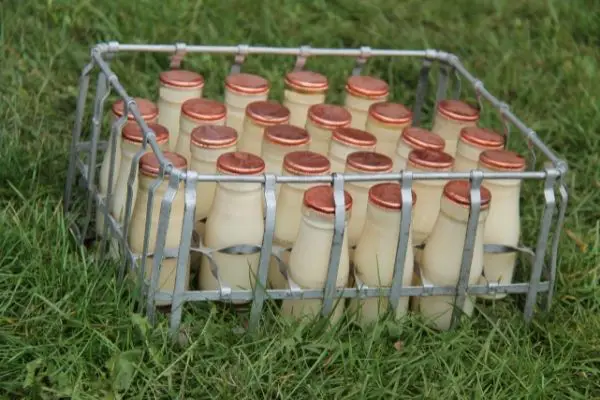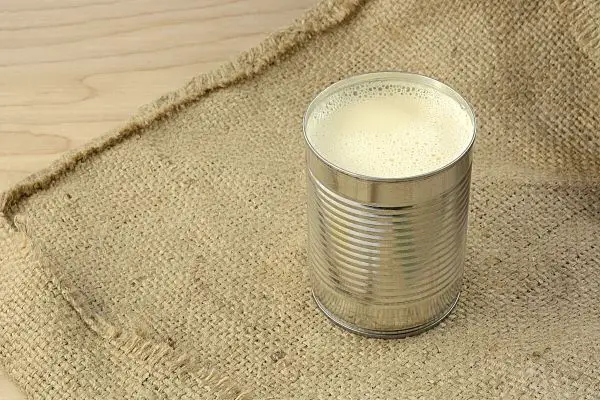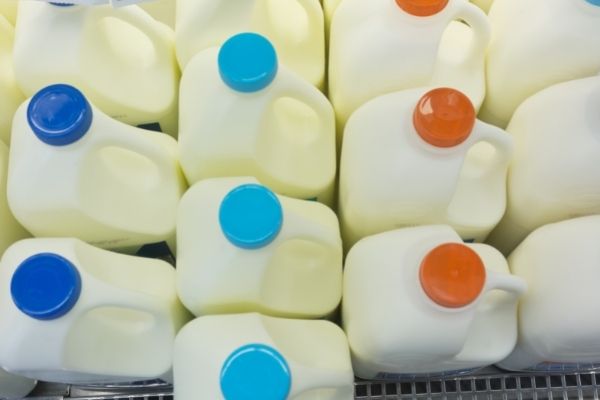One of the main advantages of dairy farming is that you can turn the milk into numerous products by processing them. This means the chance to offer your clients a wide range of product options, including cheese, cream, butter, yogurt, ice cream, buttermilk, and cream. In addition, almost all small farms have a pasteurizer to destroy disease-causing microorganisms in their milk because selling raw milk is forbidden in most countries.
To maximize your profits, what more can be done, in addition, to pasteurizing milk and processing it into different products on your dairy farm?
Well, you should also invest in its packaging.
Packaging is the use of an appropriate container to carry, identify, and contain your product. It is an important link between manufacturers and ultimate product consumers for the safe delivery of a product through different stages.
Here is information that will point you in the right direction on what milk packaging entails and how to handle it.
5 Main Importance of Milk Packaging
Below are the essential functions of packaging that should make you consider packaging milk on your dairy farm:
- 1It contains your product to facilitate its handling, distribution, and storage. There are two package types in this regard. A primary package like a can, plastic pouch, or glass jar comes into direct contact with a product’s end-user. A secondary package like a corrugated box facilitates the bundling of several primary packages.
- 2It protects your milk and dairy products from damage, deterioration, loss, spoilage, or contamination.
- 3It can serve as a communication medium by informing product users of its content and any safety warnings.
- 4Attractive package designs can become a form of marketing to attract clients.
- 5Tamper-proof packages will keep your product secure on its way to a consumer.
Types of Packages for Milk
Here are your alternatives for packaging milk on your farm:
1) Paper-based products and paper

Paper Based Milk Containers
The paper and paper-based products used to package milk include greaseproof, vegetable parchment, wax-coated, boxboard, plastic-coated, kraft, glassine, and liner board paper. These papers can be in the form of wrappers, cartons, boxes, pouches, cups, or bags. Paper is weightless, easily disposable, and low cost. Nevertheless, it has a low tear and wet strength, so it can easily disintegrate and spill your milk.
2) Glass

Milk in Glass Bottles
You can use opaque or transparent glass for packaging milk. Glass, in this case, is used as bottles, jugs, tumblers, or jars. As a packaging material, it is strong, rigid, and able to keep out water, chemicals, or gas from your milk. But unfortunately, it is fragile and heavy.
3) Tin Plate

Milk in Tin Can
Tin plate pack usually comprises a thin mild steel-coated sheet layered with pure tin. It is often used as an internally lacquered can that is highly resistant to corrosion. Tin cans are renowned for their exceptional barrier protection and strength. However, they are heavy, difficult to open or close, and expensive.
4) Aluminum foil
0.012-0.015mm is the standard thickness for foil used in milk packaging. It can be lacquered or have a thin plastic film to boost corrosion resistance. Aluminum foil is used as boxes, wrappers, and cartons for packaging milk. It is greaseproof, odorless, non-toxic, hygienic, and non-absorptive. Nonetheless, it is susceptible to damage by strong acids or alkalis and has a low tear strength.
5) Plastics

Plastic milk bottles
Recently, the use of plastic for packaging has seen an introduction of blow-molded, injection-molded, and thermoformed containers to suit diverse market needs. Plastics in milk packaging can be cups, boxes, bottles, and cartons. In addition, flexible plastic films are used as pouches, wrappers, and sachets. These are categorized into low and high polymers.
The high polymers are polystyrene, polyethylene, polypropylene, polyamide, polyester, and polyvinyl chloride. These protect your milk from losing moisture and keep microorganisms out. Nonetheless, your milk can spoil if you are not careful to get rid of all air before sealing. Cellophane is an example of a low polymer used for packaging milk.
Plastic is easy to fabricate and costs little. However, its demerits include low barrier properties, lack of heat resistance, fragility at low temperatures, and a lack of products compatibility.
Which is the Best Milk Packaging Material?
There is no superior packaging material from the above for your milk. Your choice is primarily determined by your budget, the benefits you are aiming for, and the availability of material.
Moreover, the ideal package for milk should fulfill the requirements below:
- Protect and preserve your milk from packaging to consumption
- Suitable for the selected distribution and sales pattern
- Act as an advertising and marketing tool
- Attractive to clients
- Easy to store, open and dispose of
- Protect the milk from chemical, distribution, and biological changes
- Economical to both your business and the client
How Do Milk Packaging Machines Work?
Milk packaging machines can be manual or automatic. Manual packaging machines are relatively cheaper than their automatic counterparts. The automated machines will sometimes pack up to 200 milk packages per minute. When using pouches, they will move intermittently to stations where they are filled and then sealed before packing them for distribution. Automatic pouch filling machines can have single, double, or four-lane configurations.
An operator will load the preformed pouch onto the machine, and then a roller will transport it to a section where it is gripped. A proximity sensor will detect this pouch and load it to the vacuum loader. When you need the packaging printed, you can get a machine to do so before the pouch is moved to the filling section. After filling the pouch, a deflator will squeeze out all air from it before sealing it using a hot seal bar. This binds the sealant layers using pressure, heat, and time to make a strong seam.
Some dairy farms pack their milk in bottles. For them, a bottle-filling machine is appropriate. Most machines fill 10-liter plastic or glass bottles before sealing them with tamper-proof caps. Milk bottling machines are also used for packing yogurt, sour cream, condensed milk, and fermented baked milk.
Packaging Requirements To Maintain Milk Quality
When packaging your milk, here are some requirements to keep in mind to ensure that your product is quality.
- The storage room for your packaging material should be dust and vermin-free to negate the risk of contamination.
- Milk packaging should not be re-used except when they are of a specific type that can be thoroughly cleaned and disinfected before use.
- It would be best to seal the package on your premises immediately after filling it.
Conclusion
Running a dairy farm can be overwhelming without some guidance. Thankfully, you can now make your dairy farm more profitable by choosing the right packaging with the help of this guide. Remember to take enough time and think carefully about your package design before choosing your packaging material or shopping for the packaging machine.
To ensure your package stands out, it is advisable to work with a knowledgeable marketer who will guide you on the design that will appeal most to your target market. You can also get the input of your clients on what they want to see in your package. Though these steps sound time-consuming and expensive, they are sure to maximize your profits. Therefore, they are worth taking when aiming for a fruitful dairy farming venture.
This is not an Investment Advice
The Ideas and Strategies presented on this website and the information are based on our research and experience. These strategies are not intended to be a source of financial or business advice concerning the material presented. The information and/or documents contained on this website do not constitute investment advice. Any business idea or investment plan with financial risk should never be used without first assessing your own personal and financial situation or consulting a financial professional.
Sources:
Get More from Your Milk: Increasing Profit through Value-Added Dairy Food Products
Packaging Materials for milk and dairy products
